| Carrie Anne: A few weeks ago, Raspberry Pi hosted its first ever Young Rewired State centre and took part in the Festival of Code. We had a lot of fun. Our participants talked about their experience in this blog post. Whilst we were at the finals in Plymouth, our teams were competing against a group from BBC Birmingham mentored by our good friend Martin O’Hanlon, and their Raspberry Pi project blew us away. Here in their own words is a little more about it. While taking part in the YRS Festival of Code at BBC Birmingham our team wanted to come up with something fun. The idea we finally settled on after much talk of boats and canals (thanks Martin!) was the internet enabled coat hook – a coat hook which would tell you what to wear that day based on the weather forecast. Fuelled by an endless supply of biscuits and coffee at BBC Birmingham and with the help of our mentors we set about creating our 'hack'. At the weekend down in Plymouth we were lucky enough to make it into the final three for the 'Best in Show' category, losing out to another team. However since we were runners up in the category we were rewarded with some limited edition Blue Raspberry Pis! Our idea was well received throughout the weekend in Plymouth, but what surprised us most was the reception that it received online. Seeing people we've never met before announce online that they'd buy our 'internet enabled coat hook' that we'd hastily constructed a few days prior was the craziest part of the weekend. We've each written a short paragraph about our contribution to the 'hack' and what we learnt during the week.
We built the Lego around the coat rack and then the LED chipboards to secure the whole thing together, originally using a breadboard to connect up the Raspberry Pi and the LEDs with crocodile clips, however we kept facing issues where the LEDs would not light up. We realised that this was because one of the clips wasn’t on properly or the pin in the breadboard was loose, so decided that it would be more secure and look better if we created an actual chipboard and soldered all the parts together: cue multiple expeditions down to the workshop and a lot of time bonding with the soldering iron (if you'll pardon the pun). The building of the Lego structure took around half a day, not including the numerous heated discussions about which colour bricks to use, and then completing the circuitry meant we had a working prototype design only a couple of hours later.
I started off figuring out how to control the LEDs using an Arduino, but then we all agreed that it would be better to use a Raspberry Pi rather than an Arduino because I find Python much easier to understand than Arduino, and we could also use the GPIO to hook up the LED devices to the Raspberry Pi. So, it seemed simpler to use the Raspberry Pi to control everything instead. I used Python and the RPi.GPIO library to write the code to allow the back end to control the LEDs.
Carrie Anne: Although this project did not win in its category, it could still win the public vote! If you are as impressed as we are with this project then head on over to the voting page to cast your vote for Hook! |
A Semi-automated Technology Roundup Provided by Linebaugh Public Library IT Staff | techblog.linebaugh.org
Wednesday, August 20, 2014
Getting hooked on programming with YRS project ‘Hook’
Subscribe to:
Post Comments (Atom)
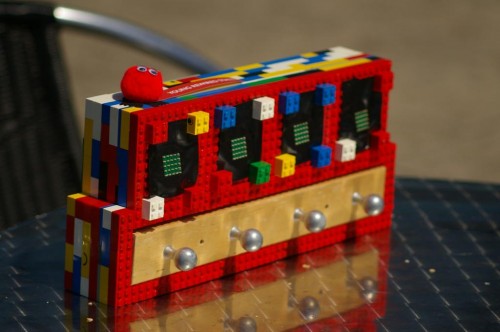
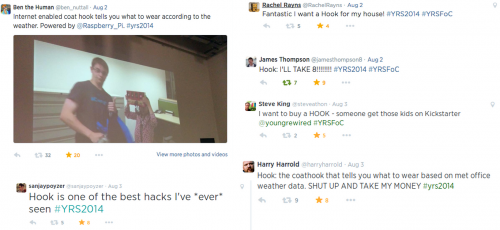
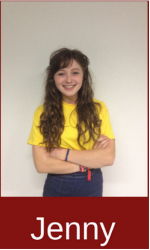
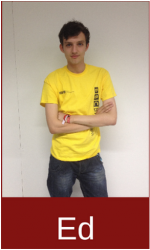
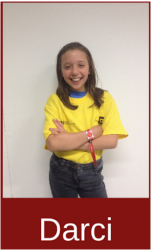
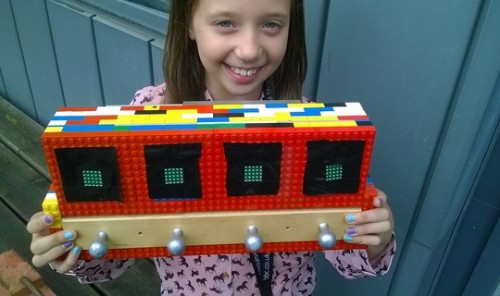
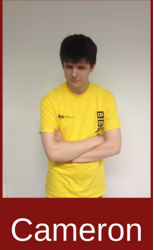

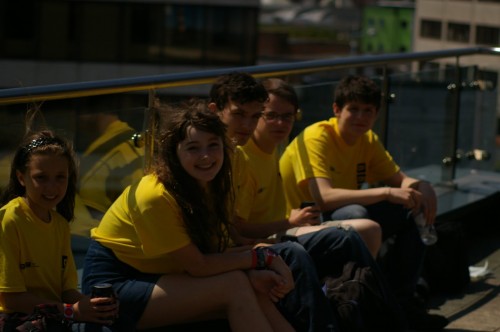
No comments:
Post a Comment